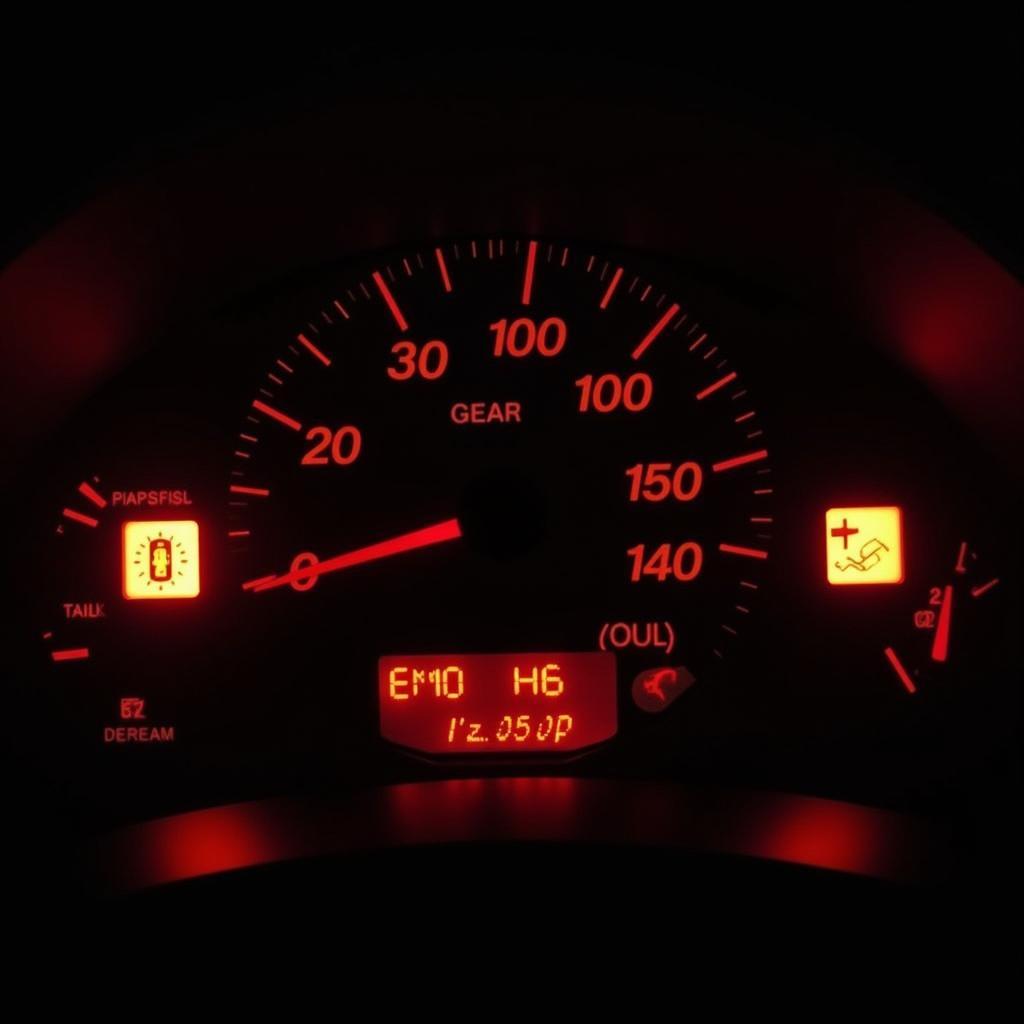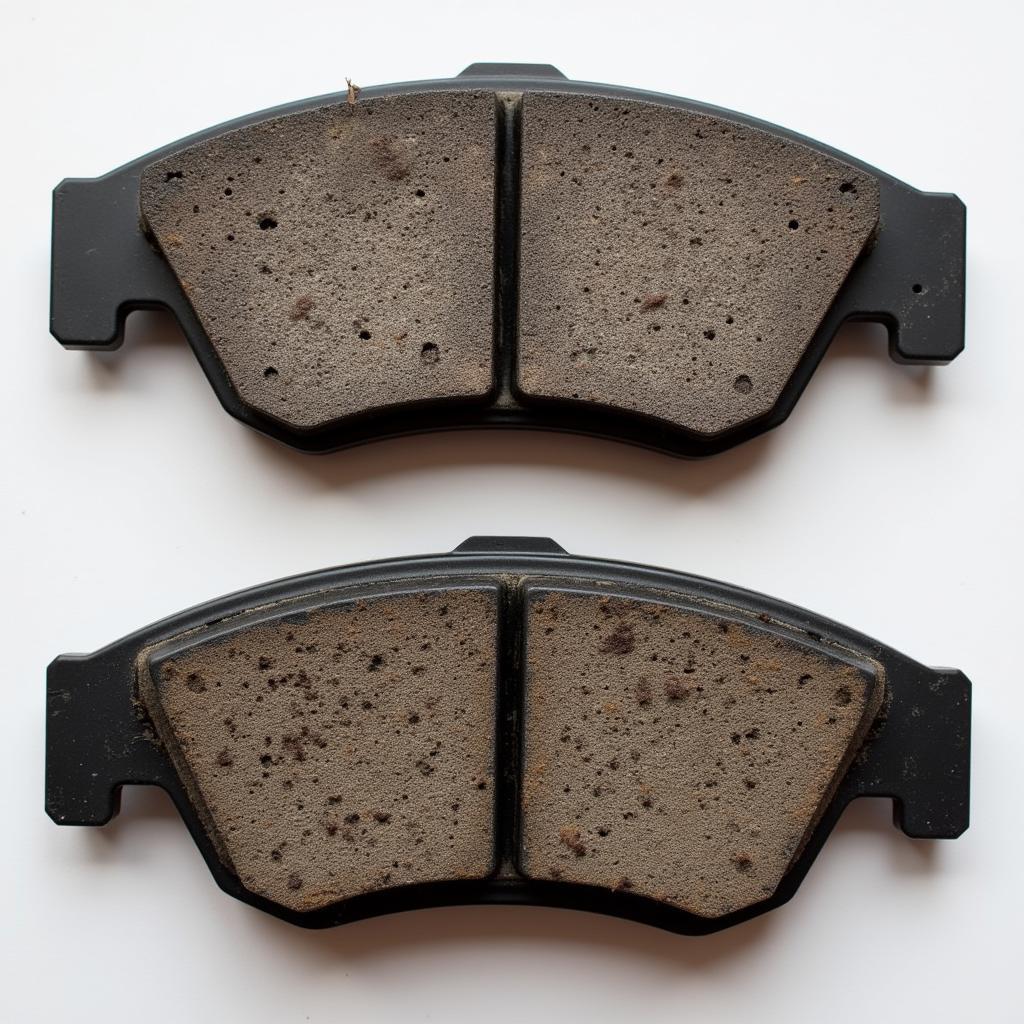Imagine this: you’re cruising down the road in your beloved Volkswagen Beetle, the wind in your hair (or at least, blowing through the sunroof), when suddenly, a yellow light on your dashboard illuminates – the dreaded brake pad warning light. Don’t panic! This is a common issue, and understanding what it means and how to address it can save you time, money, and potentially even prevent an accident.
This article will guide you through everything you need to know about the Volkswagen Beetle brake pad warning light, from why it comes on to how to troubleshoot and resolve the issue.
What Does the Brake Pad Warning Light Mean?
The brake pad warning light is your car’s way of telling you that your brake pads are wearing thin and need attention. Brake pads are essential components of your braking system, designed to clamp down on the brake rotors, creating friction that slows and stops your vehicle. Over time, these pads wear down due to this constant friction.
When the brake pad material wears down to a certain point, a small sensor embedded within the pad comes into contact with the brake rotor, completing an electrical circuit that triggers the warning light on your dashboard. This light is a crucial safety feature, providing a timely alert before your brake pads reach a critically low level.
What to Do When the Brake Pad Warning Light Comes On
While the appearance of the brake pad warning light can be alarming, it’s important to remain calm. Here’s a step-by-step guide on what to do:
-
Don’t Panic: The warning light itself doesn’t mean your brakes have failed. It simply serves as an early indicator that they need attention soon.
-
Assess Your Driving: If you’re on a busy highway or in a situation where pulling over immediately is unsafe, drive cautiously to the nearest safe location. Reduce your speed, maintain a safe distance from other vehicles, and avoid hard braking.
-
Inspect Your Brakes (If Possible): If you feel comfortable and it’s safe to do so, you can visually inspect your brake pads. Look through the spaces between the wheel spokes for the brake caliper. The brake pad is located within the caliper. You’re looking for a significant decrease in the thickness of the pad material.
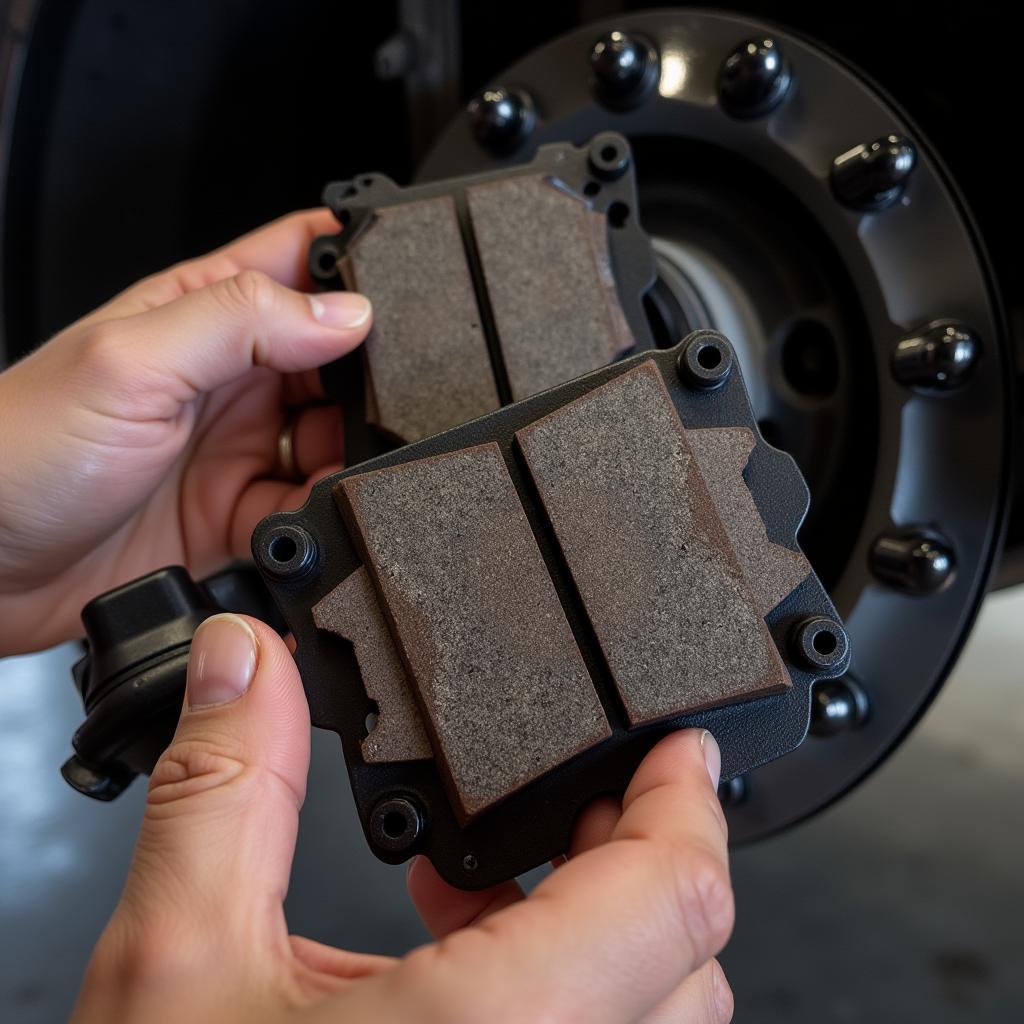 Inspecting Volkswagen Beetle Brake Pads
Inspecting Volkswagen Beetle Brake Pads -
Contact a Mechanic: Regardless of your visual inspection, it’s crucial to have your brakes checked by a qualified mechanic as soon as possible. They have the tools and expertise to properly assess the condition of your brake pads, rotors, and the entire braking system.
Common Causes of Premature Brake Pad Wear
While brake pad wear is a natural part of driving, certain factors can accelerate the process, leading to more frequent replacements:
-
Driving Habits: Frequent hard braking, riding the brakes, and city driving with lots of stop-and-go traffic can significantly increase brake pad wear.
-
Environmental Factors: Driving in hilly or mountainous terrain, extreme temperatures, and exposure to road salt can contribute to faster brake pad wear.
-
Vehicle Load: Carrying heavy loads or towing puts additional stress on your brakes, leading to increased wear.
-
Brake Fluid Issues: Old, contaminated, or low brake fluid can impact braking performance and potentially cause premature wear.
Beyond Brake Pads: Other Components to Consider
While the warning light primarily signals worn brake pads, your mechanic will also inspect other related components, including:
-
Brake Rotors: The brake rotors are the metal discs that the brake pads clamp down on. Over time, rotors can develop grooves, warping, or other damage.
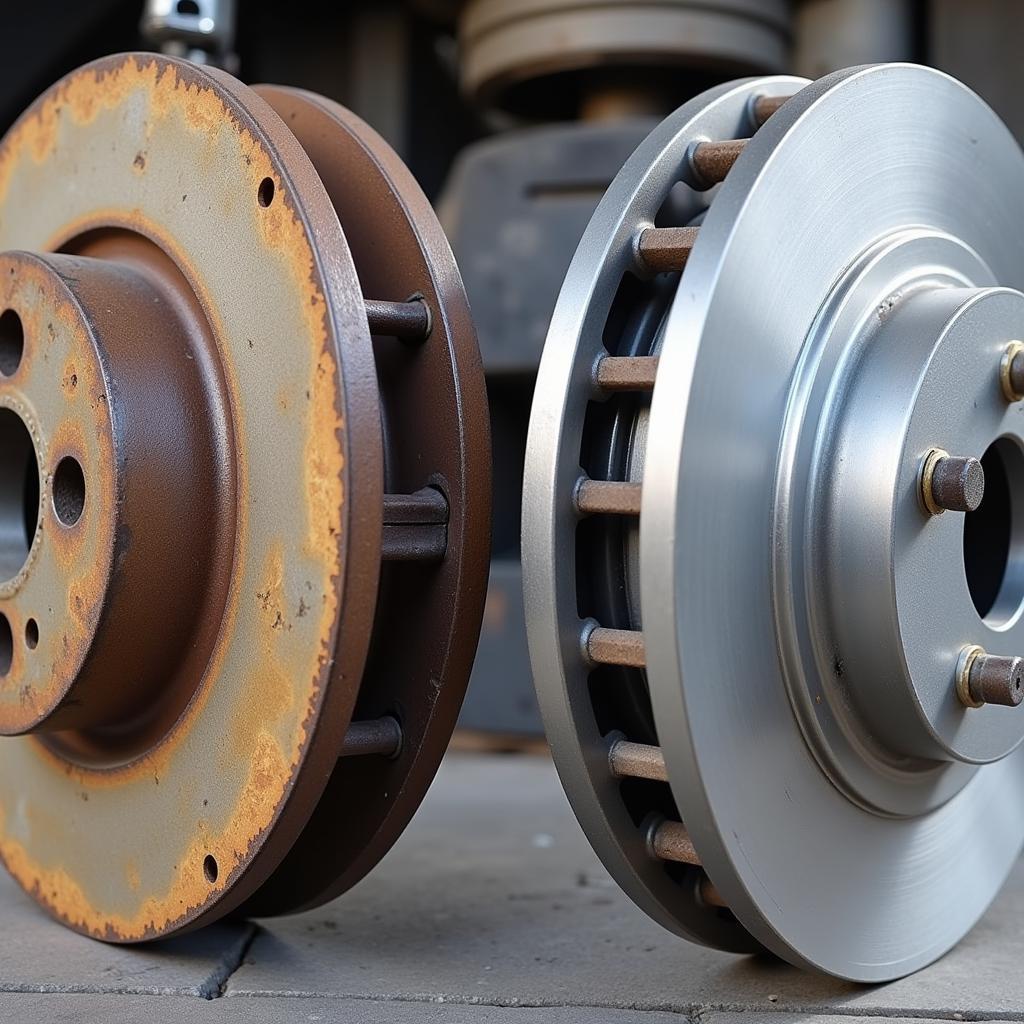 Volkswagen Beetle Brake Rotor Condition
Volkswagen Beetle Brake Rotor Condition -
Brake Calipers: The brake calipers house the brake pads and pistons. Issues with the calipers, such as sticking pistons or seized components, can impact braking performance and lead to uneven pad wear.
-
Brake Fluid: Brake fluid is essential for transferring hydraulic pressure from the brake pedal to the calipers, activating the brakes. Over time, brake fluid can become contaminated or absorb moisture, reducing its effectiveness.
-
Brake Sensors: The brake pad wear sensors themselves can malfunction. A mechanic can diagnose if the sensor is faulty and needs replacement.
Preventing Future Issues: Maintenance Tips
Proactive maintenance is key to ensuring optimal braking performance and preventing unexpected issues. Here are some tips to keep in mind:
-
Follow Scheduled Maintenance: Adhere to the recommended brake inspection intervals outlined in your Volkswagen Beetle’s owner’s manual.
-
Address Warning Signs Early: Don’t ignore any unusual noises (squealing, grinding), vibrations, or changes in brake pedal feel.
-
Adopt Smooth Driving Habits: Practice smooth braking and acceleration techniques to minimize unnecessary stress on your brakes.
-
Choose Quality Parts: When it’s time for brake repairs, opt for high-quality brake pads, rotors, and fluids from reputable brands.
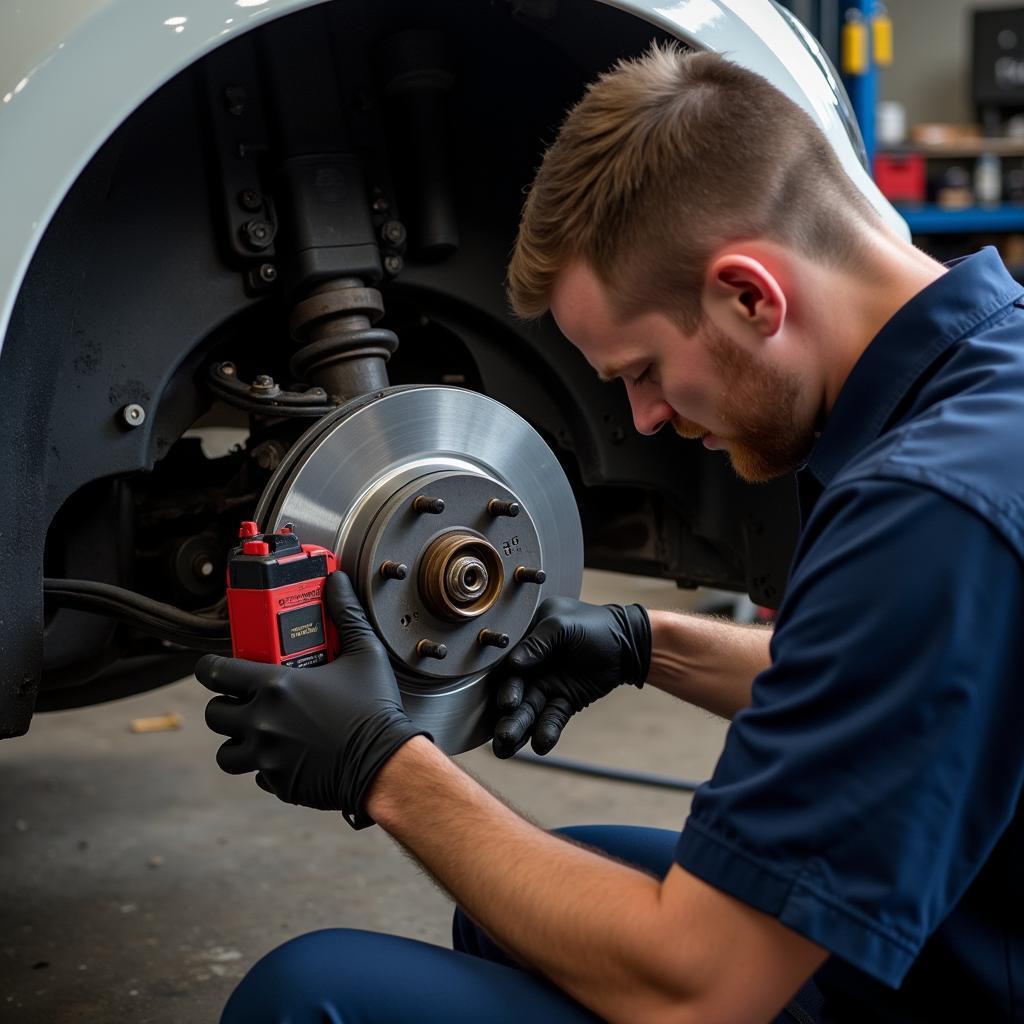 Volkswagen Beetle Brake Pad Replacement
Volkswagen Beetle Brake Pad Replacement
Conclusion
The Volkswagen Beetle brake pad warning light is a crucial safety feature designed to alert you to potential braking issues before they escalate. By understanding what this light means, taking appropriate action when it illuminates, and practicing proactive brake maintenance, you can ensure optimal braking performance and keep your beloved Beetle cruising safely for years to come. Don’t hesitate to reach out to a qualified mechanic for any brake concerns – your safety is always worth prioritizing.

